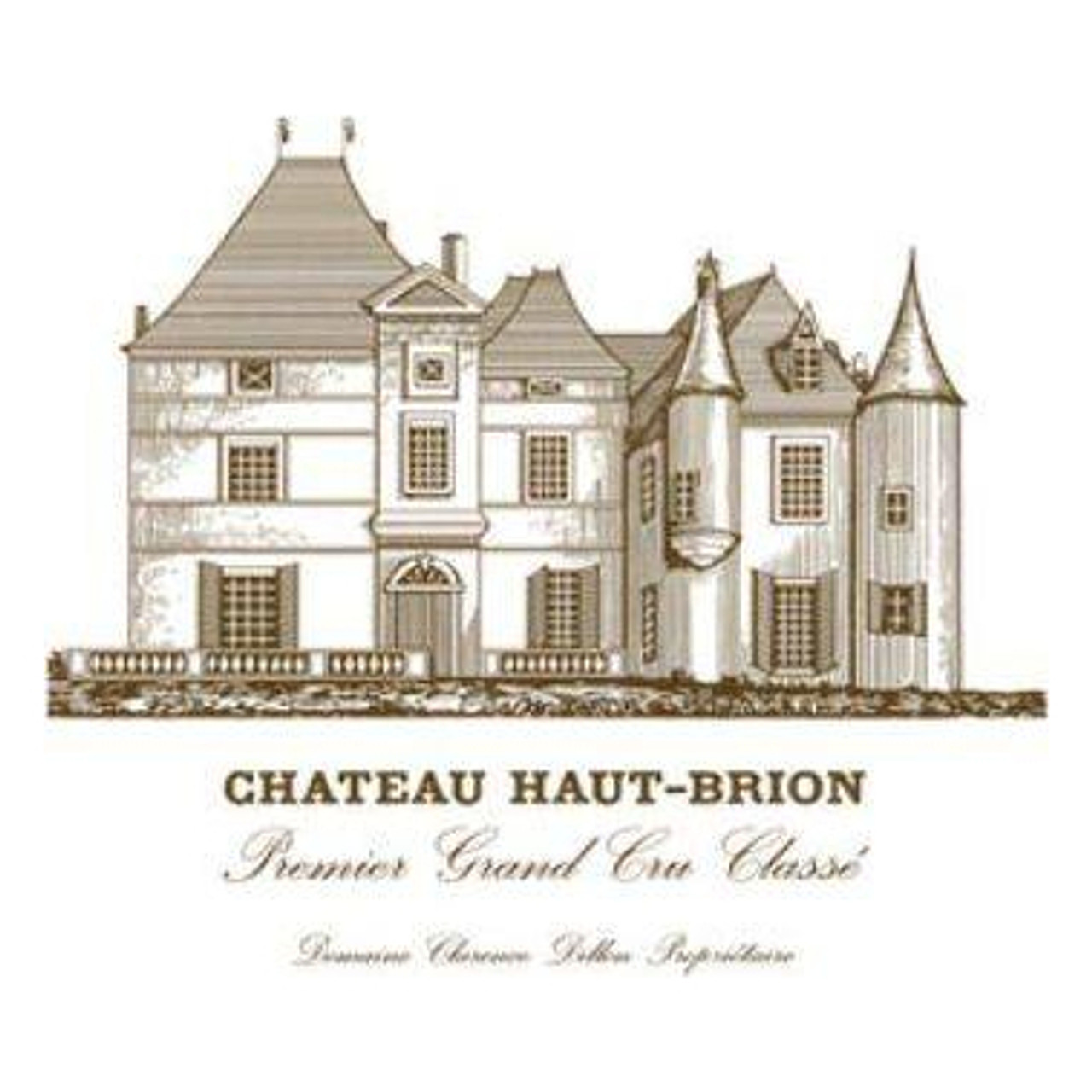
Château Haut-Brion
Domaine Clarence Dillon
135 Avenue Jean Jaurès
33608 Pessac
Tél. : +33 (0)5 56 00 29 30
contact@domaineclarencedillon.com
World-famous, Haut-Brion is the only Médoc wine to be classified as a Premier Cru Classé in 1855, even though it is part of the Graves region. It was also classified as a Cru Classé in the 1953 classification of Graves wines. Located in the heart of the town of Pessac, in the Pessac-Léognan appellation, Château Haut-Brion is the ancestor of all Bordeaux crus. From the 16th century, with the de Pontac dynasty, through the Dillon family since 1935, to Prince Robert de Luxembourg, descendant of Clarence Dillon, the château has never ceased to serve its exceptional gravel terroir to produce iconic wines with an inimitable signature on the world's greatest tables.
Although château Haut-Brion came into its own in the 16th century, the local winegrowing tradition goes back long before this sumptuous period. In fact, Haut-Brion's winegrowing activity dates back to the 1st century AD. This is attested by a Roman coin, found in the vineyard, revealing the portrait of a Roman emperor, that of Emperor Claudius. Winegrowing in Bordeaux and in this part of the vineyard, the Graves region, was already in full swing at the time of Burdigala (Bordeaux in Gallo-Roman times). The piece in question has since joined a number of other objects recovered and displayed in the estate's small museum.
Haut-Brion is the first "Cru" in history to be mentioned as a "cru", i.e., a vineyard producing wine on the same site. This is attested by two manuscripts dating from 1521 and 1526, in which the term "cru" is clearly mentioned alongside the name "Aubrion".
In 1533, Jean de Pontac acquired the seigneurial rights to Haut-Brion from a Basque merchant, Jean Duhalde. Some time later, in 1549, he began construction of the present château. Jean de Pontac and his descendants, Arnaud II and Arnaud III de Pontac (who would go on to consolidate the solid reputation of Haut-Brion wines) would do everything in their power to produce and promote a new style of wine. Haut-Brion is the precursor of all today's red Grands Crus. But it was undoubtedly Arnaud III de Pontac (President of the Bordeaux Parliament) who actively promoted Haut-Brion wines in London among the crowned heads. With him, Haut-Brion wine met with great success in England under the name of "New French Claret", which imposed the style of today's great red wines, although the "French claret" of the time was different from the Haut-Brion wines we know today. But it was a success. So much so that the wine found its way onto the finest tables, including that of King Charles II of England in 1660. Another striking example: Arnaud III de Pontac was the first to sell his wine in London taverns. In 1666, he sent his son François-Auguste, accompanied by a (very avant-garde) French chef, to London to open a very upmarket (for the time) tavern he christened "Pontack's Head". This tavern, a kind of closed club, was soon frequented by influential intellectuals (including the famous empiricist philosopher John Locke), artists, aristocrats, writers and wine lovers, who found their happiness in this tavern (which resembled a delicatessen and also served as a restaurant) over a wine they paid 7 shillings a bottle (compared with 2 shillings for other, more ordinary wines). Haut-Brion's reputation soars to the top, and the entire intelligentsia become ambassadors for its wines.

Everyone was astounded by the quality and taste of the wines. So much so that later, on May 16, 1677, the famous philosopher John Locke came all the way from France to Haut-Brion to visit the estate and try to understand how the Haut-Brion terroir influenced the taste of the wine. On the spot, he exclaimed, "the wine of Pontac, so highly esteemed in England, is produced on a mound facing west, in a region of white sand mixed with a little gravel, from which one would think nothing could grow." John Locke had just understood that poor, thin soil mixed with gravel (small, semi-precious stone-like pebbles originating in the Quaternary period) was the secret of Haut-Brion and great wines.
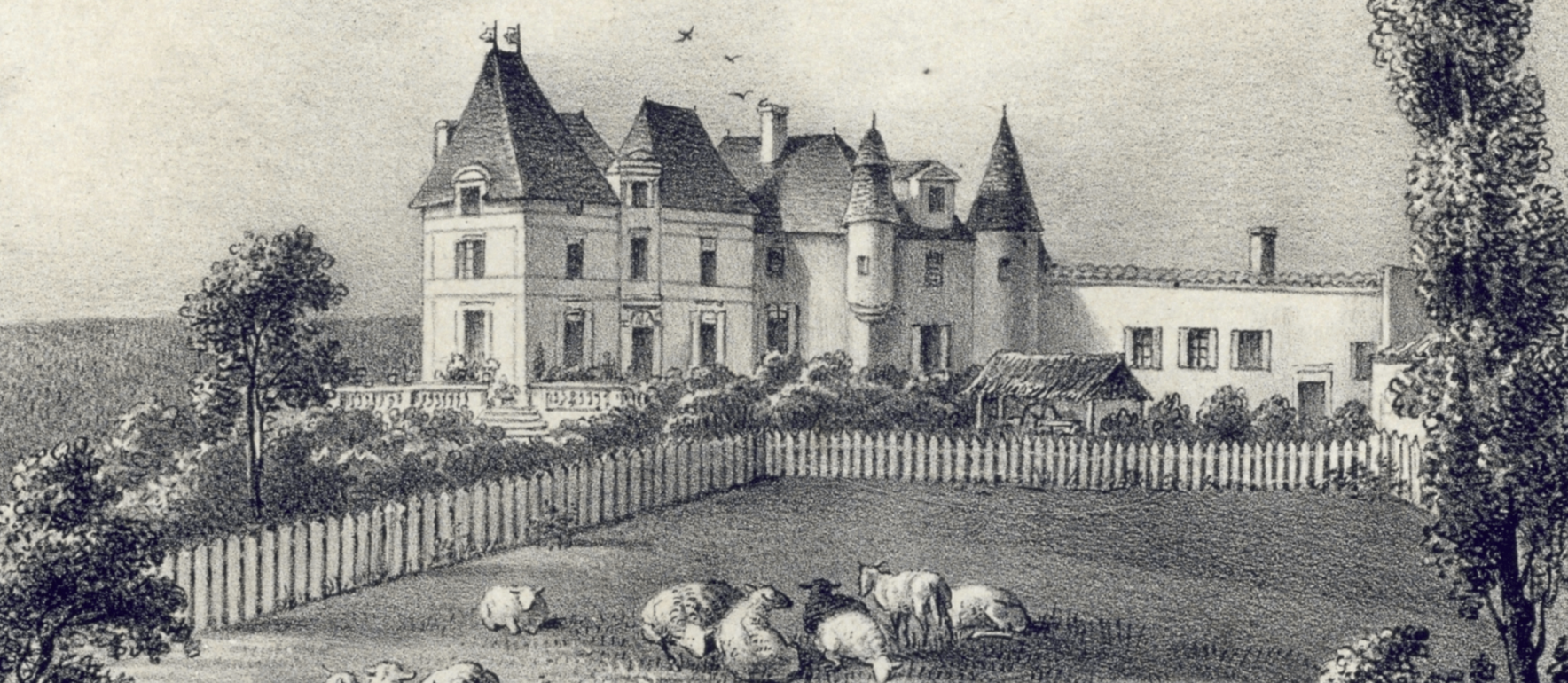
In the 18th century, Comte Joseph De Fumel (a military man by trade), a descendant of the De Pontac family and inheritor of his father's estate, took over the château. A new golden age for Haut-Brion was thus underway, just as it had been under the dynasty of his descendants. He considerably enlarged the vineyard by developing the famous croups of the vineyard (the highest-quality areas already identified by his predecessors) and, above all, built a French-style park that can still be seen today.
However, a major encounter, decisive for the destiny of the cru, would forever seal Haut-Brion's relationship, already glorious in England, with the United States. The man in question was Thomas Jefferson, principal drafter and father of the text of the United States Declaration of Independence, and co-founder of the young American nation along with George Washington, John Adams, Benjamin Franklin and three other founding fathers. A man of science, philosopher and agronomist, he was a jack-of-all-trades. During his tenure as U.S. ambassador to France (in Paris), Jefferson took advantage of a few days to visit the Bordeaux region, on his return from a tour of vineyards in Italy and Languedoc. He spent 4 days in and around Bordeaux. He spent 4 days in and around Bordeaux. On May 25, 1787, he paid a visit to Joseph de Fumel to try and understand the reputation of this wine, which his friend Benjamin Franklin had praised so highly. Visiting the vineyard, he concluded that "the soil of Haut-Brion, which I have particularly examined, consists of sand in which there is an almost equal quantity of round gravel or small stones, as well as a little silt". Thomas Jefferson, like John Locke before him, had just understood the importance of this terroir in the unique taste of Haut-Brion wines. The next day, he wrote to his brother-in-law Francis Eppes, recommending that he order a batch of Haut-Brion (Obrion) from the 1784 vintage, i.e. 6 dozen bottles. He continued: "This will give you an example of the best Bordeaux wine, Obrion being one of the four recognized as the best.During his 4-day stay, Jefferson visited Yquem, Carbonnieux, Latour, Lafite-Rothschild and Haut-Brion. These were wines that he had even recorded in a personal classification, in his diary and travel notebooks, a classification that was already a precursor long before the 1855 Crus Classés rating.
This very special relationship with Haut-Brion, as with Yquem, led to Haut-Brion being exported, thanks to Jefferson, to the United States, all the way to the White House (where he became the 3rd President). This link between Château Haut-Brion and the North American continent has never wavered since, especially when we consider the future involvement of Americans, the Dillon family, in Haut-Brion's destiny in the 20th century.
Following the Revolution of 1789, Haut-Brion passed through several hands, including those of the famous Talleyrand (Charles Maurice de Talleyrand-Périgord), then Minister of External Relations under Napoleon Bonaparte, future Emperor Napoleon I, who bought the estate in 1801. It wasn't until 1855, when the property belonged to Joseph Eugène Larrieu, that Château Haut-Brion achieved the ultimate consecration: inclusion as a Premier Cru Classé in 1855, thus joining the very closed circle of Yquem, Latour, Margaux and Lafite (Lafite-Rothschild). Haut-Brion, which is located in the Graves region, is the only château outside the Médoc to claim this status in the imperial classification of 1855.

In the 1920s, after the estate had struggled through a complicated period between phylloxera at the end of the 19th century and the end of the First World War at the dawn of the '20s, Château Haut-Brion came under the ownership of André Gibert, who kept it for some ten years before having to part with it. The man was said to be looking for a charismatic buyer to keep this jewel and its exceptional terroir from withering away. It was here, shortly after the Great Depression, that the château was to experience another golden age under the Dillon family, Americans with a deep love of France and its wines. In 1935, Clarence Dillon was about to buy Château Cheval Blanc in Saint-Emilion, but was prevented from doing so by driving rain. The deal was settled in no time. On May 13, 1935, Haut-Brion became an American property, and would remain so for a very long time. Clarence Dillon is a wealthy New York banker. Haut-Brion is his secret garden. The prestigious cru benefited from the financial power of its owner, as well as his unshakeable passion for it. Together with his nephew Seymour Weller, the two men set about modernizing the estate, installing electricity, landscaping the grounds and renovating the winery.
In 1953, his son, Douglas Dillon (U.S. Ambassador to France), who later became Secretary of the Treasury under the administration of J.F. Kennedy, took over management of the estate from Seymour Weller.
Her daughter Joan Dillon, granddaughter of Clarence Dillon, who had spent most of her life in France, succeeded her cousin Seymour Weller as Princess of Luxembourg in 1975. In 1978, widowed by Prince Charles of Luxembourg, she married Philippe de Noailles, Duc de Mouchy. From 1979 until his retirement in 2002, the Duke was Managing Director of Domaine Clarence Dillon, working hand-in-hand with his wife and providing invaluable assistance in managing the company's operations. During this period, Joan Dillon, the Duchess of Mouchy, completely renovated the château's interior - she had a passion for decoration - while also taking care of the exterior, creating the park around the château. It was also under her management that, in 1983, the family invested in the sumptuous Château La Mission Haut-Brion, another Graves Cru Classé, located opposite the Haut-Brion plots. As for innovation, in 1991 she and her husband initiated the redesign of the avant-garde vat room with truncated-cone tanks. Let's not forget that Haut-Brion was already the first to introduce stainless steel vats in 1961 - when many crus were still equipped with concrete or wooden vats - on the recommendation of the famous oenologist, Emile Peynaud. In a way, Haut-Brion already had one foot in the future, that of the 21st century.
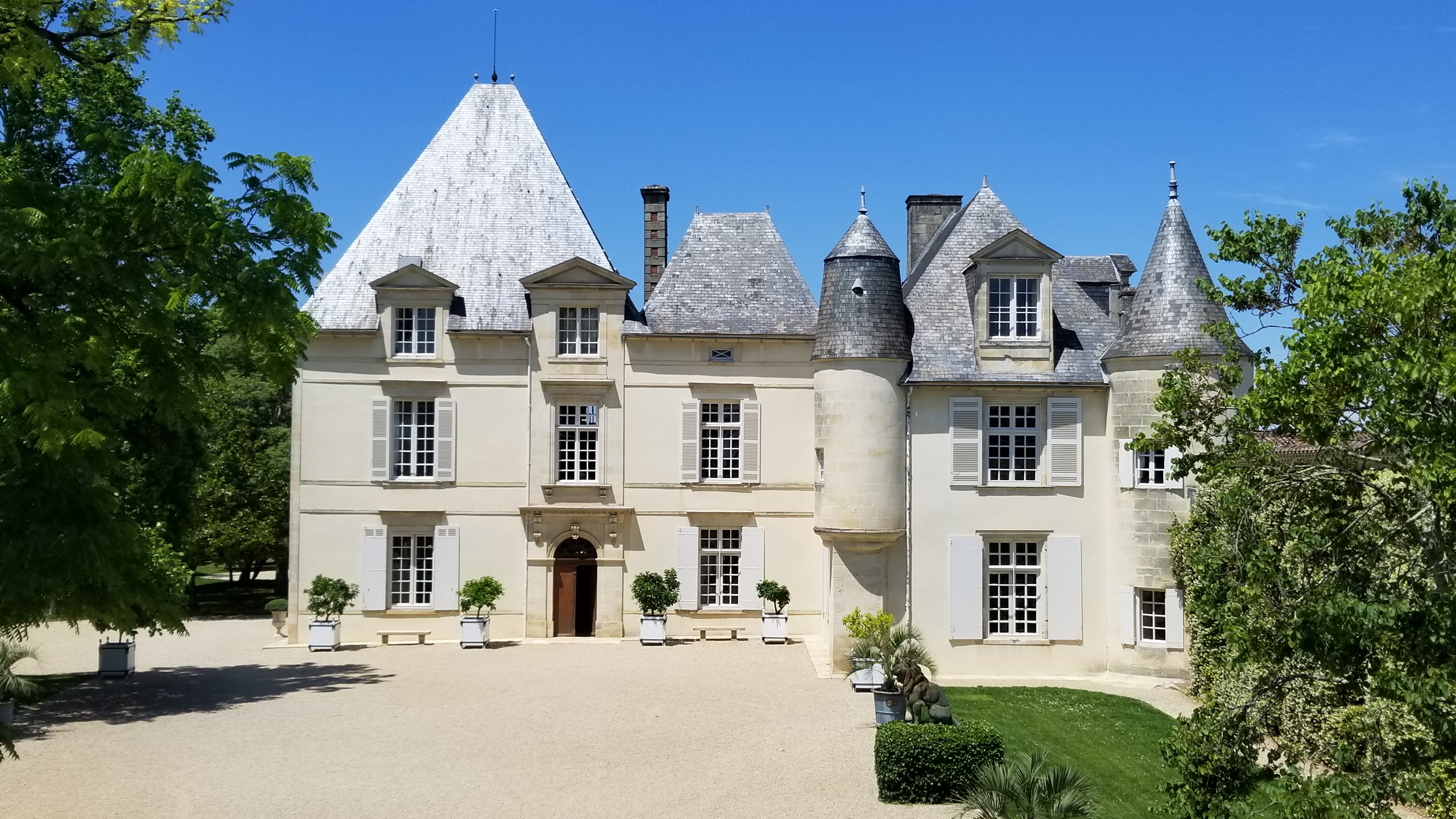
A new era brings Haut-Brion definitively into the 21st century. Seventy years after his great-grandfather, Clarence Dillon, acquired Haut-Brion, his great-grandson, Prince Robert de Luxembourg (son of the Duchess of Mouchy, Joan Dillon), joins the family business after having worked as a screenwriter in Hollywood, with a passion for cinema and audiovisuals. In June 1997, Prince Robert de Luxembourg became a member of the company's management team, and was appointed Managing Director in 2002, before finally taking over as President of Clarence Dillon Estates in 2008, replacing the Duchess de Mouchy, who preferred to hand over the reins of the company to him.
Last but not least, Domaine Clarence Dillon, following in the footsteps of Clarence Dillon, who was passionate about French cuisine and gastronomy (he took courses at the famous Paris cooking school, Le Cordon Bleu), has opened an embassy of the French art of living, to which Prince Robert de Luxembourg attaches great importance, in his Paris residence. It houses the two-star Le Clarence gourmet restaurant and La Cave du Château, an exceptional retail and online boutique offering the finest local wines and spirits.
In 2018, Prince Robert de Luxembourg and Domaine Clarence Dillon joined “Primum Familiae Vini” (Leading Wine Families), an international association of 12 families, owners of prestigious estates producing some of the world's finest wines.In 2021, Prince Robert de Luxembourg will begin renovation work at Haut-Brion: magnificent buildings to ensure the hospitality and art of entertaining to which the Dillon family is so attached.
What's new is that the estate and its vineyards are located at the gateway to Bordeaux, in other words, in the heart of the Pessac agglomeration, a commune adjoining Bordeaux. Thankfully, the château and its terroir have not had to worry about disappearing under the impact of rampant urbanization. It is hard to imagine that Haut-Brion could ever have disappeared due to land speculation. But Haut-Brion and its history, the heritage it has represented and defended for centuries in the history of Bordeaux wines, combined with the pugnacity of its various owners, could only save it from this sordid situation. Other properties, very numerous in this part of the Graves region, unfortunately disappeared during the 20th century due to urbanization, considerably reducing the area planted with vines and depriving us of a diversified architectural and viticultural heritage. It's worth recalling why, how and by whom the Pessac-Léognan appellation was created in 1987. It was the late André Lurton (owner of the André Lurton vineyards, including Château Bonnet, La Louvière, Couhins-Lurton, De Rochemorin, De Barbe Blanche and Coucheroy) who fought hard for recognition of the specificity of this part of the Graves region. The idea was to create an appellation to protect the winegrowing heritage, to save the châteaux from disappearing under the impact of urbanization and gravel quarrying. Thus was born the Pessac-Léognan appellation in 1987.
The Haut-Brion vineyard, with its exceptional terroir, covers some 51 hectares, 48 of which are planted with red grapes (Cabernet Sauvignon, Cabernet Franc, Merlot and Petit Verdot) and just 3 hectares with white grapes (Sauvignon and Sémillon). The vines are planted on terraces and hilltops, culminating at around 30 metres above the plain. The complex soil/subsoil combination is made up of clay, falun, limestone and white sand with gravel deposits (20 centimeters to 3 meters) forming a natural drainage network that is perfect for preventing excess water from entering the soil when it rains. It is this combination of soils that gives Haut-Brion wines their greatness. The vineyard, located in the heart of the city, benefits from a micro-climate that favors the ripening of the grapes, which are harvested exclusively by hand and then processed in the vat-house. The wines are then aged in new oak barrels for between 20 and 24 months, depending on the vintage profile. In fact, Haut-Brion makes its own barrels with an in-house cooperage (as do Château Margaux, Lafite-Rothschild and Smith-Haut-Lafitte). It's a way of controlling everything and ensuring Haut-Brion's own style, by controlling the supply of oak staves and the type of toasting required, so as not to over-roast the wines aged in barrels.
Know-how in managing this vineyard is above all a question of skills, and therefore of teamwork. Domaine Clarence Dillon has long been able to count on charismatic personalities such as the late Jean-Bernard Delmas (iconic steward and director with over 46 vintages to his credit, and like his father before him, who managed the technical aspects of Haut-Brion for a very long time). His son, Jean-Philippe Delmas (3rd generation of Delmas at Haut-Brion), took over as Chief Operating Officer after his father's “retirement” at the end of 2003, assisted both in the vineyard and in the cellar by the solid duo of Pascal Baratié (Vineyard Manager) and Jean-Philippe Masclef (Technical Manager).
Château Haut-Brion's wines are iconic, leading the way among the great wines of Graves and the Pessac-Léognan appellation (whose wines are classified as both white and red in the 1953 classification of Graves wines). It's hardly surprising, then, that they are sold on wine markets the world over. They are sought-after for their refinement, suavity, elegance, signature and longevity. Haut-Brion breathes extra soul into its wines, and humbly offers a lesson in elegance.

In this great vintage sealing a remarkable trilogy in Bordeaux (2018-2019-2020), Château Haut-Brion red 2020 is very generous and very aromatic, pure and refreshing on floral notes of iris, fruits such as raspberry and blackberry, licorice, cigar with a few spicy touches. Remarkably fresh on the palate, thanks to its acidity (yet the wine has as much alcohol as in 2019), it is fleshy and full-bodied, with sheathed, smooth, creamy tannins. Cabernet Franc and Cabernet Sauvignon have fully played their role as guarantors of freshness, while structuring the mid-palate with great elegance, giving this wine the weight of a serious wine. A great Haut-Brion, with an enthusiastic classicism and a talkative finish. A very great Haut-Brion, solidly built for long ageing.
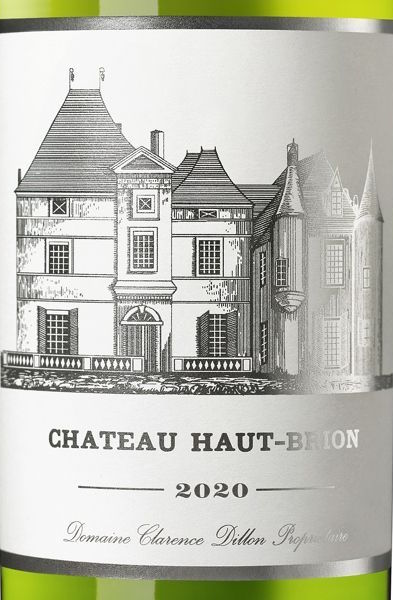
Made from 64% Sauvignon and 36% Sémillon, this white grand vin (produced at an average of 500 cases per year) is a dynamic, airy Pessac-Léognan. Concentrated, the nose bursts with refreshing, gourmand expressions of lemon zest, white rose petal and white-fleshed fruit, without revealing everything at this stage. The palate is harmonious, long and precise, with plenty of tension, yet full-bodied without heaviness, giving a sensation of total balance. The palate is sapid and appetizing. Château Haut-Brion dry white 2022 has great length. A truly great dry white. A great success!
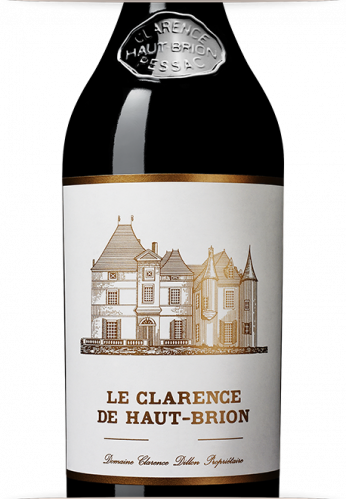
A little clarification! Clarence de Haut-Brion, Haut-Brion's second wine (both red and white), is the former Bahans de Haut-Brion. It was renamed from the 2007 vintage onwards to honor Prince Robert de Luxembourg's great-grandfather, Clarence Dillon, who bought the château in 1935. Clarence de Haut-Brion comes from the same vines as the Grand Vin, and therefore benefits from the same care and attention as the Grand Vin. It is aged partly in new barrels (20 to 25%) and partly in one-year-old barrels (used the previous year for the Grand Vin). Predominantly Merlot, complemented by Cabernet Sauvignon and Cabernet Franc, this wine is discreet at first glance. However, after swirling, it reveals an aromatic expression of fruits such as blackberry and wild strawberry, with light empyreumatic notes. The palate is powerful, with well-born tannins and a tight weave that is not unbalanced and lacks neither character nor elegance and persistence on the finish.

La Clarté de Haut-Brion is a special white from 26 hectares of young vines at Château Haut-Brion and Château La Mission Haut-Brion (acquired in 1983). Made from 56% Semillon and 44% Sauvignon Blanc, this dry white is crystalline, brilliant and golden in color. The aromatic expression is floral, with notes of acacia, yellow rose petals and refreshing lemon notes. On the palate, it's lively, full-bodied and greedy. A well-crafted dry white that has nothing to be ashamed of when compared to other dry whites in the appellation.
Red wine
1900-1926-1928-1929-1945-1947-1949-1953-1959-1961-1970-1975-1978-1981-1982-1985-1988-1989-1990-1995-1996-1998-2000-2003-2005-2009-2010-2015-2016-2018-2019-2020-2022-2023

Website under construction
Available Soon